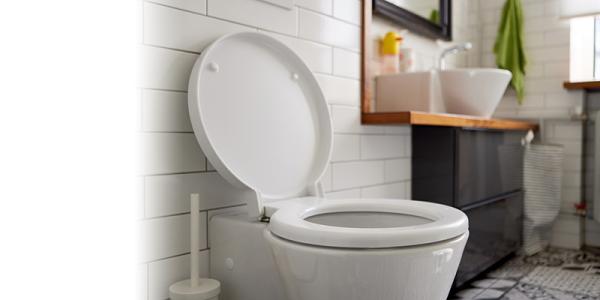
Physicians and folk healers going back to the ancient Greeks have looked to bowel movements (BM) for diagnostic insights. The conclusions they drew, ranging from demonic possession to “humoral imbalances” don’t stand up to modern science. However, modern doctors can glean important information about your health by studying your bathroom habits.
In this article:
- Bowel movements offer valuable insights into your health, as changes in their appearance, color, and frequency can sometimes indicate underlying medical conditions.
- Most variations are normal and related to factors like diet, hydration, and lifestyle, but persistent or significant changes—such as blood in the stool, chronic diarrhea, or constipation—should be evaluated by a healthcare provider.
- Regular colonoscopy screenings are now recommended starting at age 45 to help detect colorectal cancer early.
What IS That Stuff Anyway?
Bowel movements are literally waste -- what’s left of your food once it has been fermented in the gut and absorbed in the small intestine. The stool (more commonly but less elegantly referred to as poop) you eliminate is made up of the following components:
- Water. The average bowel movement is composed of roughly 75% water, depending on what you ate and whether it agreed with you.
- Bacteria. Living and dead organisms, gut microbiota like bacteroides, firmicutes, and E. coli., make up 25–54% of the dry weight of poop.
- Undigested food. This is mostly fiber but includes varying amounts of protein and fat. Mucous. Produced by the intestines, mucous lubricates and protects the lining of the colon.
- Gases. Methane, hydrogen, carbon dioxide, and sometimes hydrogen sulfide are released as flatulence.
- Metabolic waste. This includes bilirubin, a bile pigment that gives stools their brown color, cholesterol, and sloughed off dead epithelial cells from the gastrointestinal tract.
The exact composition of your waste depends on diet, hydration, gut microbiome, and your overall health.
Appearance
The shape of your poop says a lot about the shape you’re in, particularly your diet and lifestyle. The Bristol Stool Chart is a medical diagnostic tool that assesses bowel habits and the time it takes for food to pass through the digestive system:
- Type 1 is small, separate, hard pebble-like lumps
- Type 2 is a sausage shaped aggregation of hard lumps
- Type 3 is sausage shaped but less lumpy, with cracks on the surface
- Type 4 is more snake-like, thinner, smoother, and softer
- Type 5 is soft and blobby with clear-cut edges
- Type 6 is mushy with ragged edges
- Type 7 is watery with no solid pieces
This chart can help you understand the different levels with a quick glance.
Often hard to pass, Type 1 and Type 2 are a sign of constipation and indicate a lack of fluids – a sign that you are not sufficiently hydrated. Type 5 may indicate a lack of fiber, which absorbs excess liquid and makes for firmer stool. Type 6 and Type 7 are in diarrhea territory and could signal illness, digestive or intestinal issues, stress, or even food poisoning. If you generally see type 3 or 4 in your toilet, you likely have a healthy diet and lifestyle.
Color
Stool is typically some shade of brown. Every now and then, you may notice an unusual color. Most of the time, that is from something you ate, such as spinach, beets, blueberries, carrots, yams, squash, or items with food coloring. If that is the case, stool should regain its normal appearance within a couple of days. Persistent odd colors could signal a health issue.
- A green hue could be due to an infection, parasites, antibiotics, or irritable bowel syndrome.
- Reddish poop may be a sign of bleeding in the rectum or digestive tract, hemorrhoids, anal fissures, IBS, ulcers or even colorectal cancer.
- Blackish stools could indicate blood in your upper digestive system from ulcers or simply be due to your taking iron supplements or Pepto-Bismol®.
- Yellowish, clay colored, white, or greyish bowel movements indicate possible celiac disease or liver, bile duct, gallbladder, or pancreas disorders.
Frequency
None of us are regularly “regular.” Normal bowel habits can range from three times a day to three times a week! The frequency of your bathroom breaks may change over time and may slow as you age. Bowel habits are affected by a variety of factors, including activity levels, eating habits, stress, medications, over-the-counter supplements, recent antibiotic use and underlying health issues.
If you are experiencing unusually frequent bowel movements, it could be due to a variety of causes, such as:
- An increase in the amount of dietary fiber you are eating.
- High caffeine consumption – coffee and tea have a laxative effect.
- Spicy and/or fatty food you are having trouble digesting.
- Side effects of medications or supplements, including vitamin c, magnesium, some antidepressants, NSAIDs, antibiotics, and other drugs.
- Female hormone changes – many women find they go to the bathroom more often when they are menstruating.
- Stress and anxiety – hormones like cortisol and adrenaline can induce bowel contractions.
When to Talk to Your Doctor
Changes in bowel habits are usually perfectly normal. However, there are times when you should consult your healthcare provider. Seek medical advice if you:
- Experience a significant change in frequency such as fewer than three bowel movements per week or more than three per day. This could be from an intestinal infection.
- Have abdominal pain or bloating.
- Notice blood in your stool.
- Have excess fat in your poop – stool may float and leave an oily residue in the toilet. If this happens often, you could have a fat malabsorption disorder or an overactive thyroid gland.
- Are passing consistently thin, pencil-like stools. This indicates a narrowing in the intestinal passage and could a be a sign of inflammatory bowel disease or a colon cancer.
- Experience chronic diarrhea accompanied by pain, fever, bleeding, nausea, weight loss, weakness, or fecal incontinence.
- Are constipated for three weeks or longer and/or have constipation accompanied by fever, bloating, vomiting, pain, or the inability to pass gas.
Don’t Skip Your Colonoscopy
Make sure you are up to date on your colonoscopy screenings. Guidelines have changed. In response to a rise in colon cancer among younger adults, the American Cancer Society, the U.S. Preventive Services Task Force, and the U.S. Multi-Society Task Force on Colorectal Cancer have all lowered the recommended age for a first screening from 50 to 45. If no polyps are found, repeat screenings are scheduled every 10 years. Healthy individuals with a life expectancy of more than 10 years should continue regular colorectal cancer screening through age 75. From age 76 to 85, the decision to be screened is based on your doctor’s recommendation, overall health, and medical history.
Learn more about digestive health conditions and treatments.
This article first appeared in the August 2025 edition of the HealthPerks newsletter.

